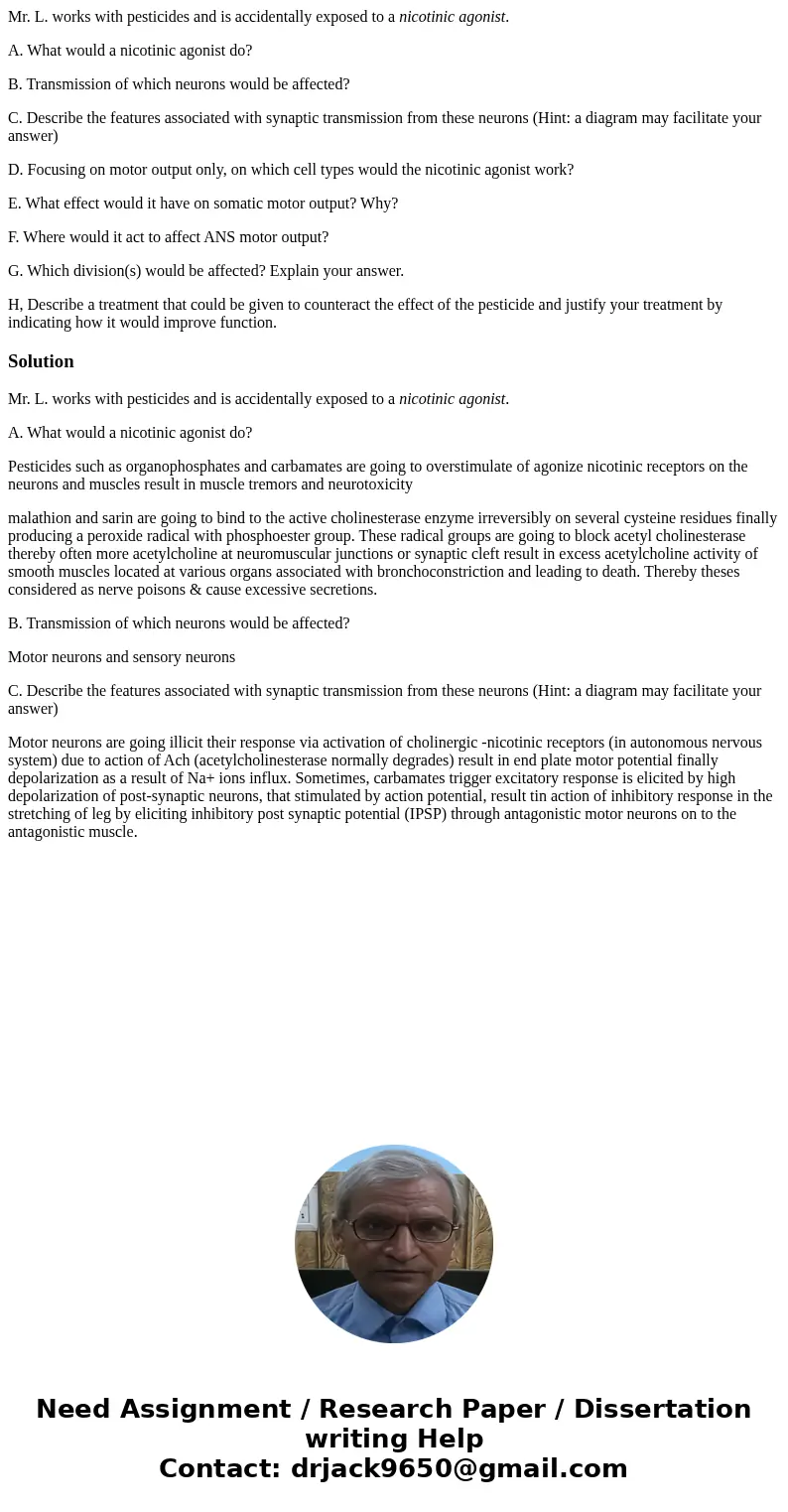Mr L works with pesticides and is accidentally exposed to a
Mr. L. works with pesticides and is accidentally exposed to a nicotinic agonist.
A. What would a nicotinic agonist do?
B. Transmission of which neurons would be affected?
C. Describe the features associated with synaptic transmission from these neurons (Hint: a diagram may facilitate your answer)
D. Focusing on motor output only, on which cell types would the nicotinic agonist work?
E. What effect would it have on somatic motor output? Why?
F. Where would it act to affect ANS motor output?
G. Which division(s) would be affected? Explain your answer.
H, Describe a treatment that could be given to counteract the effect of the pesticide and justify your treatment by indicating how it would improve function.
Solution
Mr. L. works with pesticides and is accidentally exposed to a nicotinic agonist.
A. What would a nicotinic agonist do?
Pesticides such as organophosphates and carbamates are going to overstimulate of agonize nicotinic receptors on the neurons and muscles result in muscle tremors and neurotoxicity
malathion and sarin are going to bind to the active cholinesterase enzyme irreversibly on several cysteine residues finally producing a peroxide radical with phosphoester group. These radical groups are going to block acetyl cholinesterase thereby often more acetylcholine at neuromuscular junctions or synaptic cleft result in excess acetylcholine activity of smooth muscles located at various organs associated with bronchoconstriction and leading to death. Thereby theses considered as nerve poisons & cause excessive secretions.
B. Transmission of which neurons would be affected?
Motor neurons and sensory neurons
C. Describe the features associated with synaptic transmission from these neurons (Hint: a diagram may facilitate your answer)
Motor neurons are going illicit their response via activation of cholinergic -nicotinic receptors (in autonomous nervous system) due to action of Ach (acetylcholinesterase normally degrades) result in end plate motor potential finally depolarization as a result of Na+ ions influx. Sometimes, carbamates trigger excitatory response is elicited by high depolarization of post-synaptic neurons, that stimulated by action potential, result tin action of inhibitory response in the stretching of leg by eliciting inhibitory post synaptic potential (IPSP) through antagonistic motor neurons on to the antagonistic muscle.

 Homework Sourse
Homework Sourse